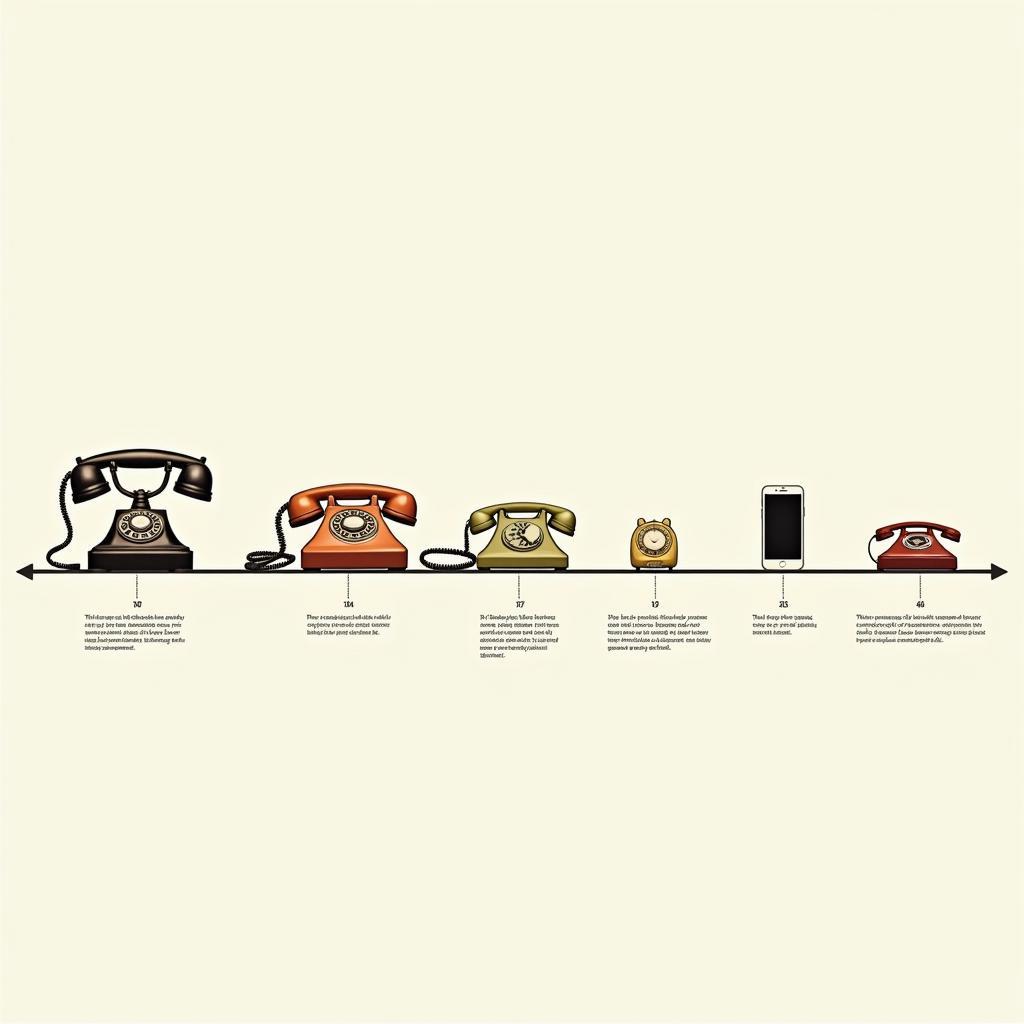The term “Telephone Preference Society” might seem puzzling at first. What does it mean to have a preference for a device? In reality, it reflects a much deeper societal shift in how we communicate and how those communication methods evolve over time. This article delves into the nuances of the “telephone preference society,” exploring its implications on our connections, relationships, and the world around us.
The Evolution of Communication and the Rise of the Telephone
To understand the concept of a “telephone preference society,” we must first travel back in time. From handwritten letters carried over mountains and seas to the invention of the telegraph and, later, the telephone, communication has continuously transformed. The telephone, a groundbreaking invention of its time, revolutionized communication by enabling real-time conversations across distances.
 Evolution of the Telephone
Evolution of the Telephone
This immediacy and the ability to hear a loved one’s voice created a profound shift in society. The telephone became more than just a tool; it evolved into a symbol of connection, bridging geographical gaps and fostering intimacy. It’s not surprising then that a “telephone preference society” emerged, where people favored the personal touch and immediate gratification of a phone call over written correspondence.
The Digital Age and the Shifting Sands of Communication Preference
The dawn of the digital age brought with it a new wave of communication technologies. Emails, text messages, and social media platforms offered instant communication with added convenience. These digital platforms transcended geographical boundaries, enabling connections across continents at the tap of a screen.
This shift toward digital communication methods led to a decline in traditional phone calls. The “telephone preference society” gradually gave way to a generation accustomed to the asynchronous nature of emails and text messages, allowing for communication at their own pace and convenience.
The Enduring Appeal of the Human Voice
Despite the rise of digital communication, the power of the human voice remains undeniable. In a world saturated with text-based interactions, the warmth and emotion conveyed through a phone call hold a unique appeal.
Hearing a loved one’s laughter, sensing a friend’s concern through their tone, and experiencing the nuances of human expression are all powerful reminders of the unique connection fostered by a phone call. While digital communication might be convenient, it often lacks the emotional depth and authenticity of a spoken conversation.
Finding Balance: Navigating the Communication Spectrum in a Digital World
The evolution of communication from the “telephone preference society” to the digital age highlights the dynamic nature of human connection. Each communication method, from phone calls to social media, offers unique advantages and caters to different needs and preferences.
Rather than viewing these methods as competing forces, embracing a balanced approach seems ideal. Understanding when a phone call is necessary to convey empathy or resolve a conflict, when an email suffices for formal communication, and when a social media post can effectively reach a wider audience allows us to navigate the complex tapestry of human connection effectively.
 Balancing Communication Methods
Balancing Communication Methods
Conclusion
The “telephone preference society” may seem like a relic of the past, but it underscores the enduring power of human connection and the importance of choosing the right communication method for the message we want to convey. As technology continues to evolve, so too will the ways we connect. Embracing this evolution while remaining mindful of the enduring power of human interaction will be key to fostering meaningful connections in an increasingly digital world.